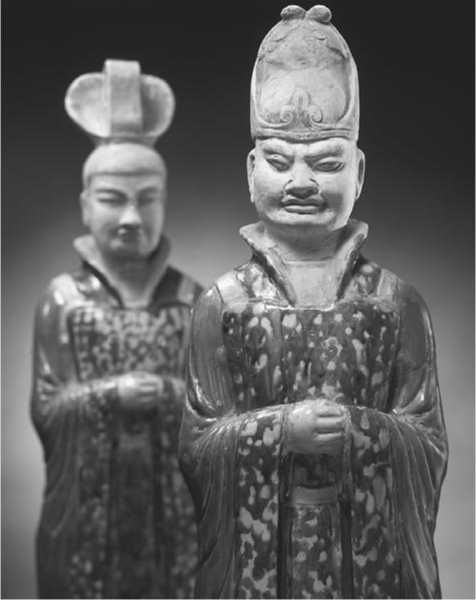Chinese emperors are known by a title assigned only after their death; thus during his lifetime, T'ai Tsung (dy-DZAWNG) was known as Li Shih-min (ZHUR-min). His father, Li Yuan (yee-WAHN; 565-635) would reign from 618 to 626 as the first T'ang (TAHNG) emperor, Kao Tsu (gow-DZU).
Ten years before the birth of T'ai Tsung, Yang Chien (also known by his reign title, Wen Ti; see entry) ended centuries of chaos in China by founding the Sui (SWEE) dynasty, in which Li Yuan served as an official. The Li family, like

Sculpture of military officials from the time of the T'ang dynasty. Under T'ai Tsung's rule and throughout the T'ang dynasty, the arts flourished in China. Reproduced by permission of the Corbis Corporation.
Many Chinese, embraced the principles of Confucianism, a belief system with roots in ancient times that stressed respect for persons in authority. In spite of this, Li Yuan and his sons would lead a revolt against the rule of Yang Chien's son Yang Ti (DEE), who ruled from 604 to 618.
A military governor assigned to protect China's borders against the Turks in the north, Li Yuan formed an alliance with these one-time enemies and marched on the Sui capital at Ch'ang-an, known today as Xian (shee-AHN), in 617. He proclaimed a new dynasty, and became ruler in the following year. By then he was in his early fifties, and he designated his eldest son Li Chien-ch'eng as his heir. His second son, however, had other plans.




 World History
World History









